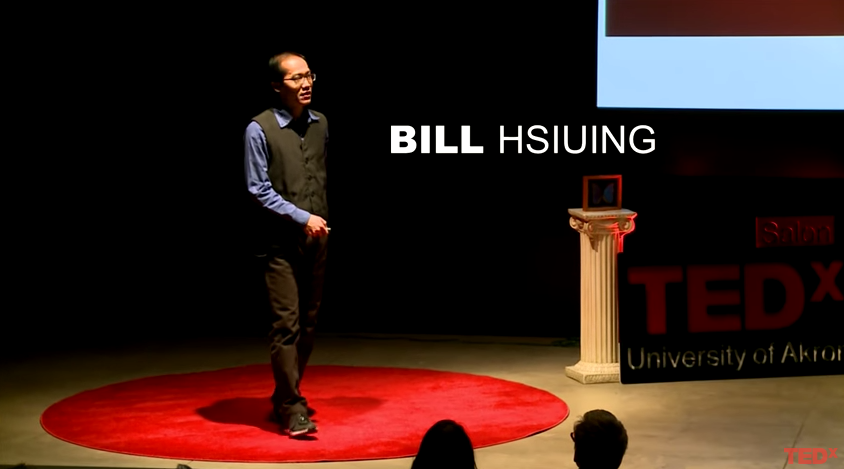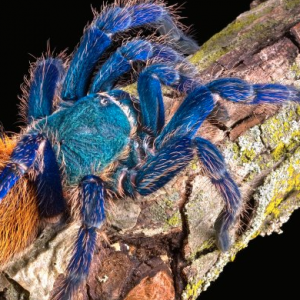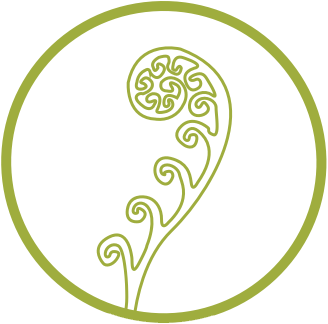
It was Biomimicry 3.8 co-founder Janine Benyus that first inspired Bill Hsiung to make innovation inspired by nature part of his science training, and Biomimicry 3.8 co-founder Dr. Dayna Baumeister that led him to discover how, exactly, to do that as he earned Biomimicry Specialist certification. Today, Bill is a Biomimicry Fellow and PhD candidate and will be one of the world’s first scientists to earn a doctorate in biomimicry when he graduates from The University of Akron’s Integrated Bioscience Program next spring.
But even before graduation, Bill’s work studying blue tarantulas has made headlines. His research focuses on how the spider “creates” color without pigments, instead using structure to display its brilliant blue. Structural color is not only highly durable, it could help reduce the pollution from pigment manufacturing and dye making processes as well as create more energy efficient electronics.
Here’s more from Bill on his work that could bring huge sustainability wins for the world by changing the way we make color:

Why did you decide to study biomimicry?
I have always been interested in biology, but also want to do research that is “useful” to the world at the same time. Therefore, earlier in my career, I was aiming to get a Ph.D. in biomedical sciences and hoping to do research that helps cure diseases. However, there was a setback that I could not finish my Ph.D. in biomedical sciences and I had to take a break from doing research altogether.
During my break, I re-watched Janine Benyus’s TEDTalk (2006). Suddenly, I realized that there is actually a broader path and potentially more impactful way to apply the biological knowledge that I have by practicing and doing biomimicry research.
Ready to infuse biomimicry into your career? Enroll by January 1 to start earning your Graduate Certificate in Biomimicry through ASU this spring
How has the Biomimicry Specialist training influenced your career?
I learned about the Biomimicry Ph.D. program at the University of Akron during our last BSP in-person intensive workshop. I think that was a major turning point for me, it completely changed my career path. Also, through my time in the BSP program, I met and became acquainted with many people who are as passionate about biomimicry as I am. Many of them became friends, colleagues, and collaborators who are very important to me.
Give us an overview of your current work researching blue tarantulas and structural color.
I like to say that I study colors in nature, especially colors in spiders. In nature, everything is interconnected, and more often than not, it is the interplay of pigmentary colors and structural colors that produced the visual appearance that we see. I do focus more on studying the nanostructure that produces the structural colors.
One of the reasons that I study spider colors is that not many people realize (notice) that spiders are fascinating, colorful critters. Many people study colors in birds, beetles, and butterflies, but not spiders. Consequently, we knew very little about how colors are produced in spiders. Therefore, even from a purely scientific perspective, it is important to study spider colors in order to understand them.
From a biomimicry perspective, spiders are also a very good model system in that they are extremely diverse and well adapted. Spiders have conquered every continent on earth except Antarctica, and it is believed that when a new island emerged from the middle of the ocean, spiders were among the first immigrants to call that island home. So, spiders might already have explored every possible way to produce colors under different contexts, a perfect model for we human to look into and learn from to solve our own problems.
How might your research help us making more durable, energy-efficient, and eco-friendly colors?
Structural color per se is durable, the color always remains the same as long as the nanostructure is not compromised. Not like pigmentary colors that bleach-out, and fade over time. Structural color is energy-efficient because it produces colors by reflecting ambient light, not absorbing, nor emitting  light (light is a form of energy). Therefore, an electronic display using the structural color principle can be viewed under direct sunlight and is energy efficient (like a Kindle, but in color). On the other hand, an electronic display that produces colors by absorbing/emitting light, such as the LCD/LED displays of your phones needs to compete with sunlight, cannot be viewed clearly, and has a shorter battery life.
light (light is a form of energy). Therefore, an electronic display using the structural color principle can be viewed under direct sunlight and is energy efficient (like a Kindle, but in color). On the other hand, an electronic display that produces colors by absorbing/emitting light, such as the LCD/LED displays of your phones needs to compete with sunlight, cannot be viewed clearly, and has a shorter battery life.
Most structural colors are iridescent, and non-iridescent structural colors are difficult to mass produce using our current fabrication techniques. My research pointed out a new approach that might help us achieve economically viable large scale non-iridescent structural color manufacture someday.
Read Bill’s research: B.-K. Hsiung et al: Tarantula-inspired non-iridescent photonics with long-range order. Advanced Optical Materials 2016: DOI: 10.1002/adom.201600599.
Advanced Optical Materials can be accessed at: http://onlinelibrary.wiley.com/journal/10.1002/( ISSN)2195-1071
What is the potential of this research to have a positive sustainability impact?
This research hints the potential of replacing pigments with “structural colorants” in the future. The way we currently make and use pigments are highly pollutant. Synthetic pigments need a high temperature (energy) and harsh chemical environment to synthesize. And we mine most of our inorganic pigments from earth crust and make a lot of pollution along the way. Not to mention that how blue jeans were dyed when making them, and the dye continues to leach out and pollute the water every time we wash them.
All those issues can be solved by replacing pigments and dyes with “structural colorants.” The “structural colorants” are more durable, won’t bleach out, and could be made out of eco-friendly materials (imagine the bird feathers and/or butterfly wings).
Read more about the potential of Bill’s work:
- Breakthroughs in Biomimicry, Recycling Unlock ‘Tarantula Blue’
- Biomimicry breakthrough could lead to ‘tarantula blue’ textiles – Circulate
- Biomimicry thinking – ‘Tarantula Blue’ now one step closer to reality
Learn more about our Biomimicry Specialist Program here.


